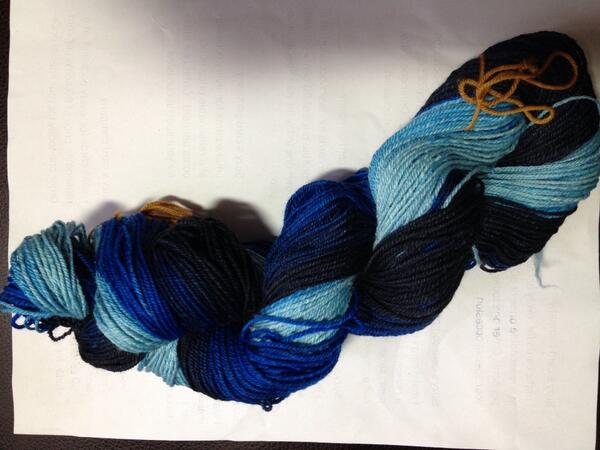That's the name of Robin Hunter's blog: How to Become a Professional Knitter. Every week she posts an interview with people in the knitting industry. And guess who is featured this week?
Me!
To read the interview and find out my deepest, darkest secrets*, click here.
Robin Hunter is a prolific knitter, designer, and teacher who is active in the knitting community. You can find her on Ravelry or on Patternfish.
*Not really. But you can read about my designs, inspirations and goals!
Friday, June 27, 2014
Sunday, June 8, 2014
France in photos
 |
| Part of a church in Mont St. Michel, an island monastary from the 8th century. |
 |
| We missed our cats while on vacation. |
 |
| A different view of the Eiffel tower at dusk. |
 |
| The Royal Chapel at Versailles. |
 |
| Looking down from the Arc de Triomphe at the traffic in the roundabout. |
Friday, June 6, 2014
D-Day: 70th Anniversary
 |
| Juno Beach, France |
It truly was the trip of a lifetime. We both studied history in university, with a focus on 20th century events. We began our trip by heading north out of Paris, then north-west to Dunkirk, Dieppe and south down the coast to Le Havre.
We timed it so that we arrived in Caen on June 3rd. We spent the day of the 3rd visiting some of the D-Day beaches, with a focus on Juno Beach, where the Canadian troops landed. It was also the day before the grand opening of the Juno Beach Center, the Canadian museum honoring the troops who served.
 | |
| D-day beach, France |
By chance, we arrived in time to witness parts of the rehearsal for the opening ceremony for the next day. We were also fortunate enough to snap a photo of the donor plaque with our name on it, as we'd pledged a donation to support the building of the Juno Beach Center.
Words can't convey the experience of being there. Standing witness to the sights, sounds and emotions and trying to imagine what it like all those decades ago when young men served their countries, sacrificing themselves for a larger goal.
 |
| D-day beach, France |
 |
| Ceremony marking D-Day in a village by one of the beaches |
 |
Each year, in Sainte-Mère-Église they
re-enact the paratrooper who got caught on the church spire. The paratrooper hung there for hours, pretending to be dead before being captured by German troops. There's actually a mannequin attached to the parachute. |
 |
| Parade on D-Day in villages near one of the beaches. |
 |
| One of the bunkers on the beach. I can't imagine attempting to land and attack here. |
 |
| View from inside the bunker. |
 |
| Pegasus bridge: a key objective in the early hours of the invasion. |
 |
| Juno Beach |
 |
| Preparing for the Juno Beach Centre, opening ceremonies. |
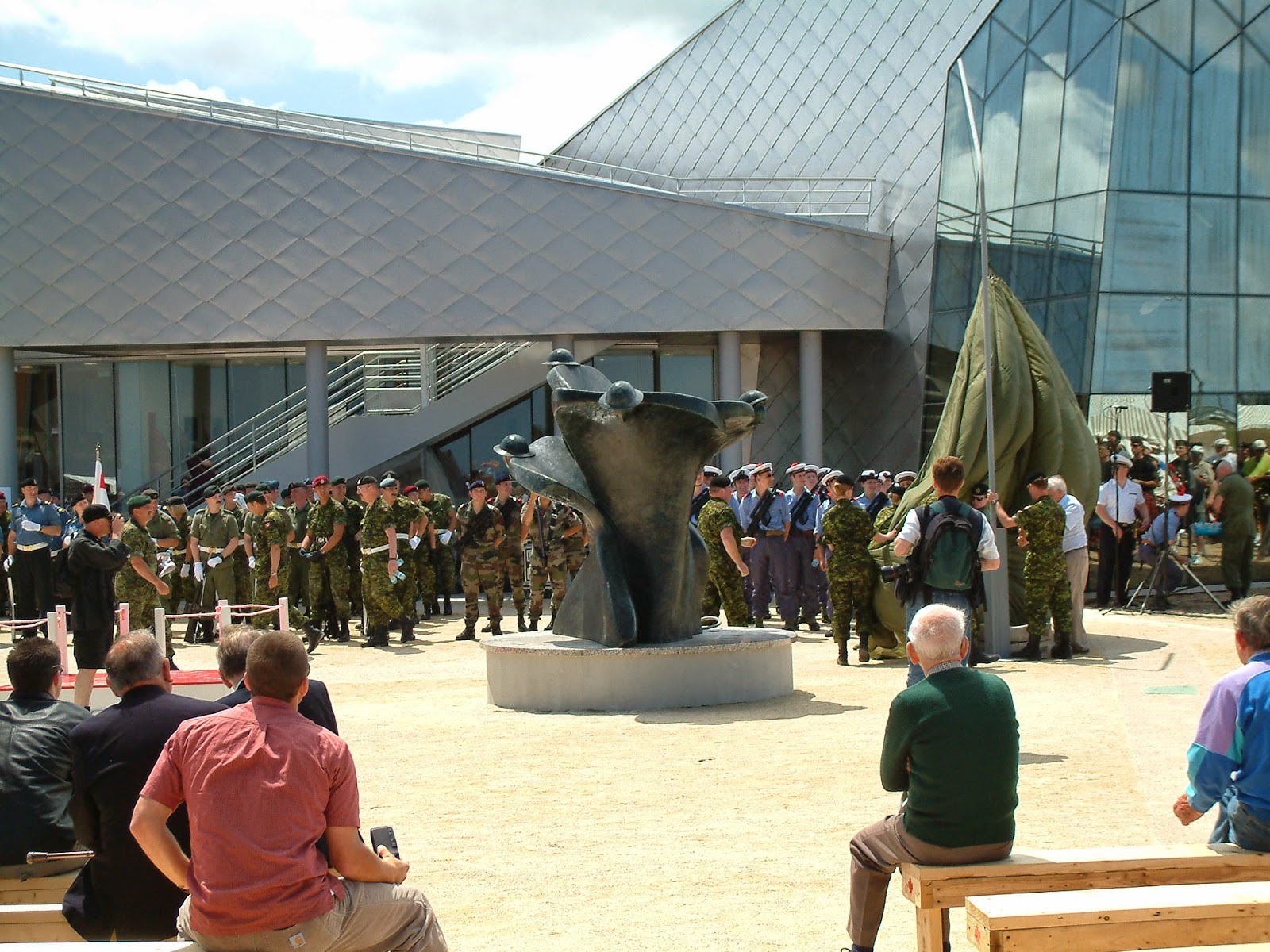 |
| Rehearsing: Juno Beach Centre, opening ceremonies |
 |
| Many veterans attended. |
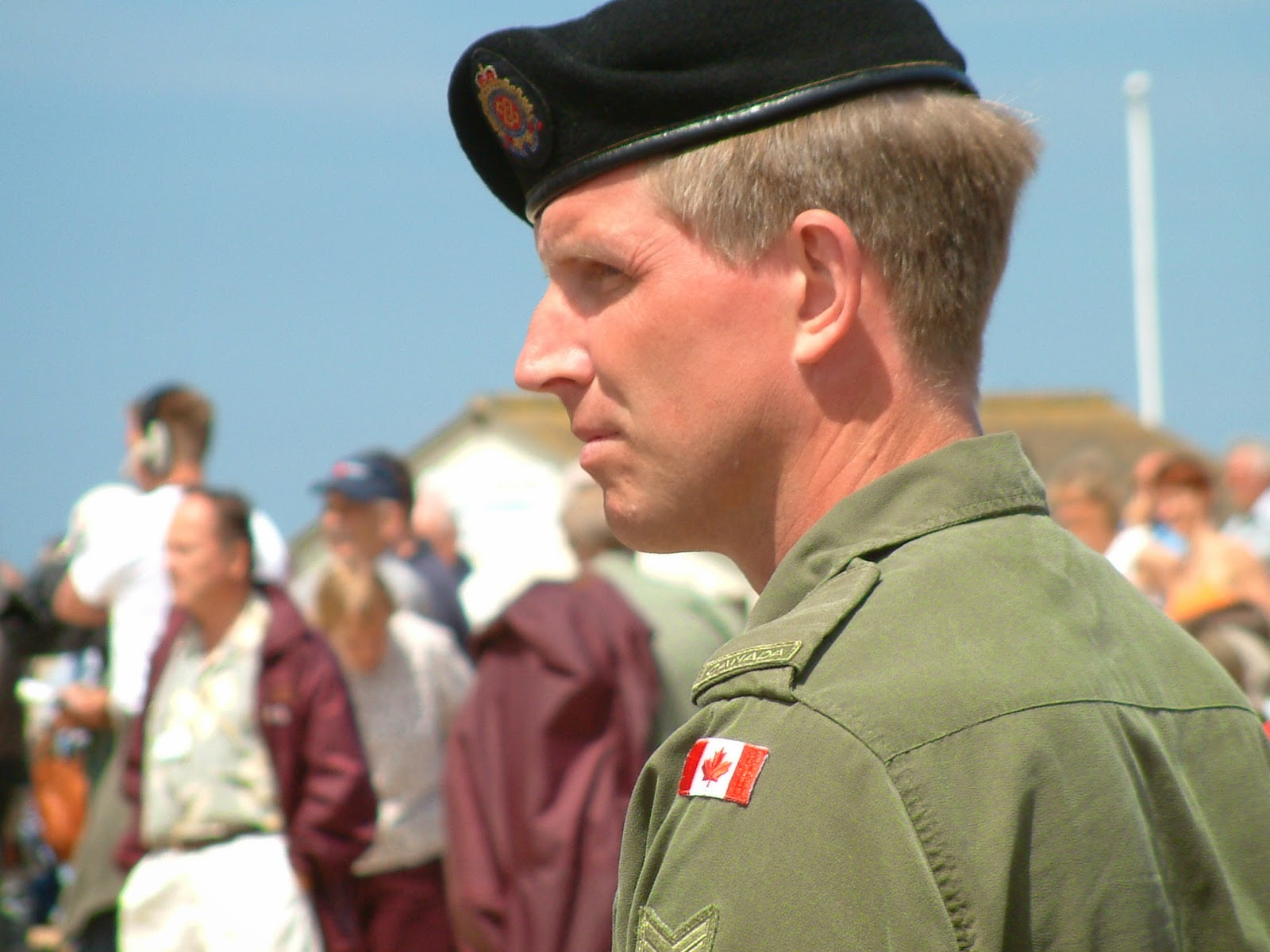 |
| As well as those currently serving. (current at time of our visit - 2003) |
 |
| Memorial/Donor plaques |
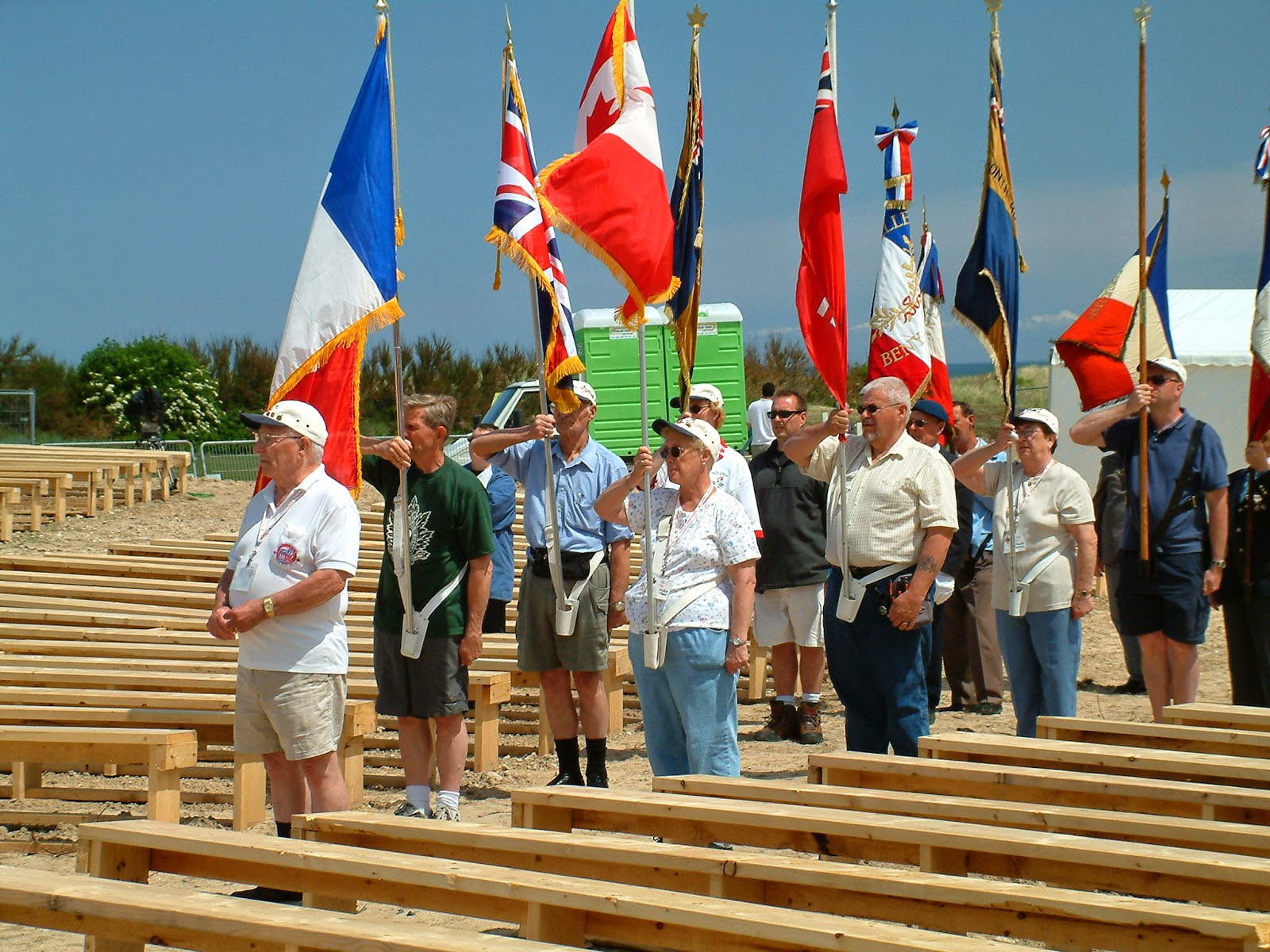 |
| Rehearsals. |
 |
| Paying tribute. |
 |
| To the beach. |
 |
| Utah Beach. |
 |
| Utah Beach. |
 |
| Memorial. |
 |
| To the Allied troops who liberated Europe. |
Monday, June 2, 2014
A Miracle!
Surely a sign of the upcoming apocalypse or, on a more positive note, a miracle of some sort. I've actually spun and plied some roving in the same month in which I purchased it!
Back at the beginning of May, I went to Maryland Sheep and Wool and battled the crowded Fiber Optic Yarns booth to pick up some merino/silk blend gradient roving. I selected a lovely blue gradient, going from a very light sky blue progressing to a midnight blue-black. A stunning red to black gradient also leaped into my bag.
A weeks ago, I started spinning the blue gradient. After a couple of color changes, I got smart and worked out a system for managing the color transitions. I tried to break the braid apart into 12-18" pieces in a spot where the colors changed. Then, after separating out the larger piece of roving into smaller, more manageable strips, I began spinning the tips of each strip where the already spun color was. When I hit the next color, I stopped and went to the next strip of roving. That gave me a nicer color transition.
I was focused on spinning fine singles, but not cobweb thin. I wanted to end up at a decent fingering-ish weight yarn after plying. I'd already decided to Navajo ply to maintain the color transitions. I'm not a big fan of barber-poling handspun. I also focused on not including a lot of twist in my singles. Previously, I've tended to over-twist my singles resulting in those little pigtailing sections. Consistency was my watch word.
In what felt like record time, I was ready to ply. In the past, I've had my singles snap on me at thin spots. This time, I was pleased to get through plying with only 1 breakage. Noticeable improvement is always encouraging!
I really enjoyed watching the color changes. I kept my treadling slow and steady and moved my hands deliberately, trying to keep the yarn plying in a consistent manner.
Surprisingly (or not), the plying took several hours which I managed with only 1 break to answer the door.
I really love my Woolee Winder for enabling me to focus on spinning instead of moving my yarn manually along the bobbin. The only 'issue' was that I didn't get to see the color transitions progress up the bobbin. Each color gets covered up by the new color. But I won't complain!
I decided to let the plied yarn rest on the bobbin for 24 hrs - more because I forgot to skein it before going to bed than due to any patience on my part.
On Sunday I wound it onto my niddy noddy, valiantly attempted to keep track of how many times I wrapped it so I could estimate yardage.
I'm pretty sure it's around 260 yards of 3 ply yarn. And doesn't it look darn pretty wound up like that?
I've also learned to not wind it so tightly on the niddy noddy. Makes it much easier to remove the yarn.
Here it is, waiting for its bath:
I'm extremely proud of this skein. It turned out very well balanced, with very few pig tail corkscrews. I think it needs to be a shawl.
I'm looking forward to spinning up my other Fiber Optic braid and seeing the red to black transition.
 |
| Navajo plying: color transition |
A weeks ago, I started spinning the blue gradient. After a couple of color changes, I got smart and worked out a system for managing the color transitions. I tried to break the braid apart into 12-18" pieces in a spot where the colors changed. Then, after separating out the larger piece of roving into smaller, more manageable strips, I began spinning the tips of each strip where the already spun color was. When I hit the next color, I stopped and went to the next strip of roving. That gave me a nicer color transition.
I was focused on spinning fine singles, but not cobweb thin. I wanted to end up at a decent fingering-ish weight yarn after plying. I'd already decided to Navajo ply to maintain the color transitions. I'm not a big fan of barber-poling handspun. I also focused on not including a lot of twist in my singles. Previously, I've tended to over-twist my singles resulting in those little pigtailing sections. Consistency was my watch word.
In what felt like record time, I was ready to ply. In the past, I've had my singles snap on me at thin spots. This time, I was pleased to get through plying with only 1 breakage. Noticeable improvement is always encouraging!
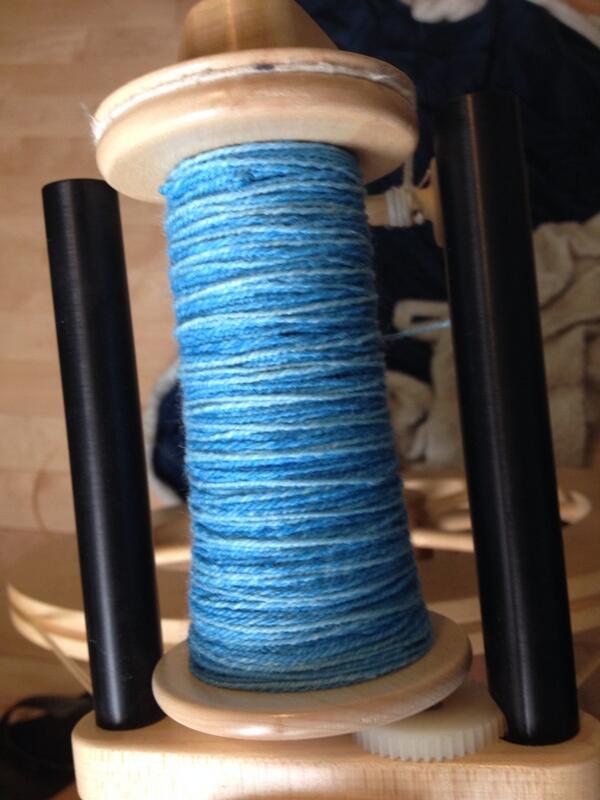 |
| Final transition to light blue. |
Surprisingly (or not), the plying took several hours which I managed with only 1 break to answer the door.
I really love my Woolee Winder for enabling me to focus on spinning instead of moving my yarn manually along the bobbin. The only 'issue' was that I didn't get to see the color transitions progress up the bobbin. Each color gets covered up by the new color. But I won't complain!
I decided to let the plied yarn rest on the bobbin for 24 hrs - more because I forgot to skein it before going to bed than due to any patience on my part.
On Sunday I wound it onto my niddy noddy, valiantly attempted to keep track of how many times I wrapped it so I could estimate yardage.
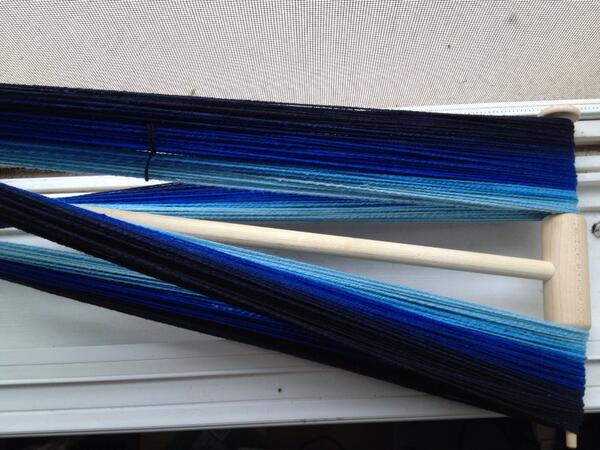 |
| On the niddy noddy, waiting for a bath |
I'm pretty sure it's around 260 yards of 3 ply yarn. And doesn't it look darn pretty wound up like that?
I've also learned to not wind it so tightly on the niddy noddy. Makes it much easier to remove the yarn.
Here it is, waiting for its bath:
I'm extremely proud of this skein. It turned out very well balanced, with very few pig tail corkscrews. I think it needs to be a shawl.
I'm looking forward to spinning up my other Fiber Optic braid and seeing the red to black transition.
Subscribe to:
Comments
(
Atom
)

